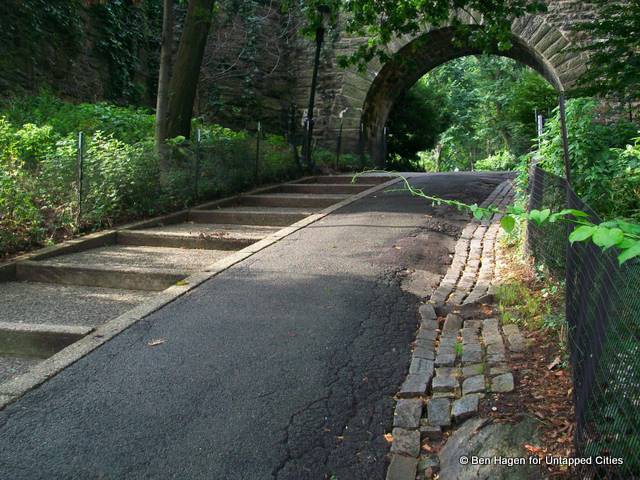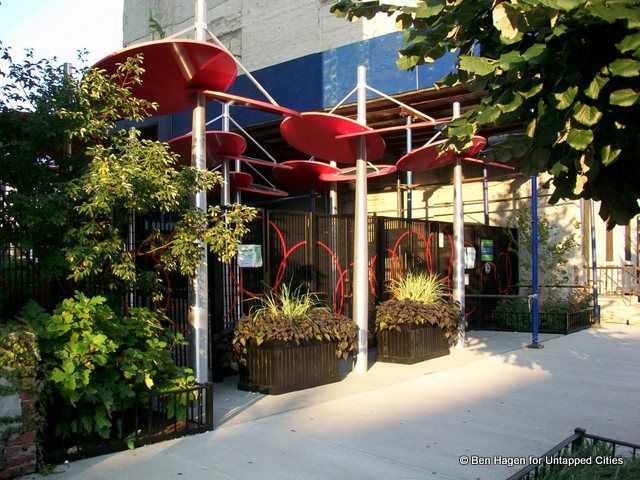How to See the Liberty Bell...in Queens
A copy of the famous American bell can be found inside a bank, which itself is modeled after Independence Hall!


History is one of New York City’s greatest assets; it’s hard to walk a block without passing by, over, or adjacent to a reminder, in some form, that the city’s evolution has been a long and interesting one. Some events, however, have had reverberations so far reaching that they have fundamentally changed the landscape of the city, and the manifestations of these historical events are far more diffuse and pervasive. The fiscal crisis that rocked the city in the 1970s was such an occurrence, leading to a vast change in the paradigm with which the city is governed.
Shrinking budgets meant that many essential services either had to be picked up by private providers or charities – or risk disappearing altogether. The previously-free CUNY began charging admission. Subway fares increased. Contrary to headlines, the city was eventually bailed out by the federal government — although the changes imposed upon the city by its terms were more than merely cosmetic, and continue to influence the ways in which city budgets are allocated.
One of the city’s hardest-hit agencies was the Parks Department. Geoffrey Croft, founder of NYC Parks Advocates, has reported that the department lost more positions in the years since the crisis than any other city agency. Though responsible for 14% of the city’s land area, the Parks Department operates with well under 1% of the city’s budget (recent levels put this number closer to ½ of 1 percent). To address the city’s unmet needs, myriad private park-maintenance organizations have proliferated. Though the most famous of these are the Central Park Conservancy and Prospect Park Alliance, these types of organizations are present in all five boroughs. The story of the parks renaissance is relatively well-known, but other lesser-known groups have also been active in preserving some of the city’s most spectacular green spaces. Perhaps the most successful is the New York Restoration Project (NYRP), a group founded in 1994 by singer Bette Midler.
NYRP is a non-profit organization that builds and maintains parks and community gardens in low-income communities throughout New York City. Claiming to have removed 2,000 tons of garbage over its lifetime, NYRP has now successfully restored four parks, all located in northern Manhattan; these include Fort Tryon Park and Fort Washington Park on the Hudson River, and Swindler Cove and Highbridge Park on the Harlem River. Of these, Swindler Cove represents the most striking physical reversal — the once forsaken site used only for illegal garbage disposition is now a 5-acre park featuring the Peter Jay Sharp boathouse, the first boathouse on the Harlem River in a century.
 Fort Tryon Park, one of NYRP’s first refurbishment projects.
Fort Tryon Park, one of NYRP’s first refurbishment projects.
The Community Gardens component of the organization has been just as successful as that of its parks. NYRP owns and operates 55 such gardens throughout the five boroughs, though they have played a part in saving an even larger number from destruction. The group led an effort, along with the Trust for Public Land, to purchase 114 gardens from the City in 1999 after Mayor Giuliani decided to sell them for development. Now the city’s second-largest owner of community gardens, the NYRP owns 11% of the nearly 500 community gardens in the city. These gardens provide innumerable benefits to the communities in which they are located; in addition to offering food and recreation, NYRP hosts classes teaching everything from urban gardening to the importance — and methods — of conservation and environmental stewardship.
NYRP also operates a restaurant — The New Leaf Restaurant and Bar — in Fort Tryon Park. The restaurant’s building, part of the Olmstead Brothers’ original plan for the park, housed a Parks Department concession stand in the years before its purchase and conversion by NYRP. The restaurant is the home of renowned chef Scott Campbell, and all net proceeds go toward maintenance of Fort Tryon Park and the organization’s gardens.
 NYRP’s New Leaf Restaurant and Bar.
NYRP’s New Leaf Restaurant and Bar.
The location of NYRP’s parks and gardens — in some of the city’s lowest-income areas — is no accident. While the privatization of certain park functions at Central and Prospect Parks may seem relatively benign, each park’s income stream results in an environment superior to what would otherwise be the case. It is in neighborhoods that lack such resources that one sees the true cost of reliance upon the private sector for park-related expenditures. NYRP has been one of the few forces fighting for the equitable distribution of parkland throughout the city, and the resources they have brought to the table have meant the difference between empty, trash-strewn lots and functional parks for many of the city’s residents.
Though NYRP unquestionably does great work, it is probably worth asking what it means for the city–groups funded largely by private capital doing what should, by most accounts, be a public function. Does the presence of corporate sponsorship at a community garden cheapen or commodify the concept? Does it strain the very idea of community stewardship? NYRP operates gardens sponsored by companies as varied as Tiffany & Co., Toyota, and Target. While this by no means speaks negatively of NYRP, the visibility of each corporation’s sponsorship represents the kind of private sector-substitution of government functionality that is reaching new heights in today’s political environment and gives these companies another tool — public service provision — in their efforts to curry favor with recalcitrant politicians and communities.
There are those, Mr. Croft included, that feel as though the efforts of groups like NYRP make it easier for the Parks Department to shirk its responsibilities — though it’s is easy to see logic in this argument, there is also a logic in those who care about parks coming together to ensure their viability. And at a time when disparities in wealth cause so much inequity in the distribution of urban services, parks advocates have to work within the system as it exists if they are to being relief to the New Yorkers who lack adequate access to green space. NYRP is working within this system to address disparities in park maintenance and provision — and as long as city resources remain scarce, we need organizations like NYRP to fill the gaps left by a system in which the quality of a park depends in no small part upon the wealth of the neighborhood that surrounds it.
 Target Community Garden in East Harlem; Target has also sponsored gardens in Brooklyn and the Bronx.
Target Community Garden in East Harlem; Target has also sponsored gardens in Brooklyn and the Bronx.
Subscribe to our newsletter